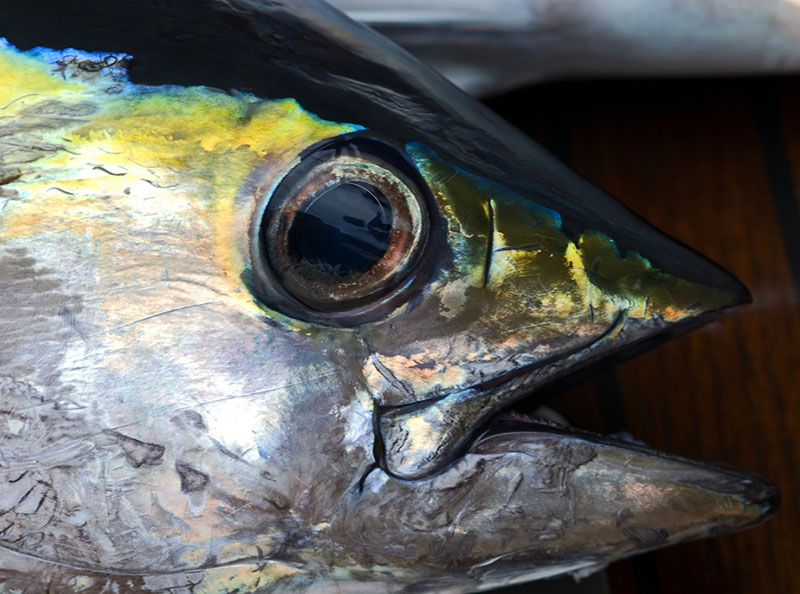Abundant in the seas and favored at the table, yellowfin tuna remains steady following last year’s rebound, with both supply and demand in good balance.
Overall, NMFS figures show a projected increase for the 2017 commercial take, rising from 226,015 to 263,089 pounds.
Rob Walker, co-owner of the New Orleans Seafood Exchange, who is based at its Baton Rouge outlet, says that while yellowfin is not the most highly prized species — that distinction goes to the hallowed bluefin tuna — it is the most traded in his business.
“The widespread availability of it across the globe over all the tuna species figures into its popularity,” says Walker. “It is found in more places than all the others, so the vast numbers dictate that it is more popular.”
Aiding in the wide distribution, Walker adds, is the development of options in freezing technologies.
“That’s why I sell way more frozen yellowfin tuna than I do fresh,” says Walker. “The technology to freeze it is far more advanced than it was 15 or 20 years ago.”
That’s important, Walker says, at a time when restaurants are trimming their staff.
“Everybody is cutting back on unnecessary human hands in the kitchen,” he says, explaining that the preservation of quality in the freezing process — coupled with the hardy nature of the meat itself — means that even high-end restaurants are comfortable using the frozen product, which processors like himself already cut into uniform serving sizes.
There is still a high demand for fresh yellowfin, which tend to get snapped up right at the dock by wholesalers looking to handle the fresh product, getting it into their hands rapidly to speed up delivery to the end users.
What hasn’t caught on largely in the United States, distributors say, is the more pricey technology that allows cryogenic freezing of whole fish, a method very popular in Japan. Prices have held steady since last year, at $3.50 per pound dockside and for the most valued, top quality fish, as much as $6 to $7 per pound, according to David Maginnis of Gulf Seafood in Houma, La.
Easy availability is the case in the Carolinas and Florida, as well.
“We have a high demand for it, especially for sushi,” said Naasha Sanford, who handles retail sales at Blue Ocean Seafood in Morehead City, N.C., only 50 miles or so from the Gulf Stream. “Its got very good flavor.”







